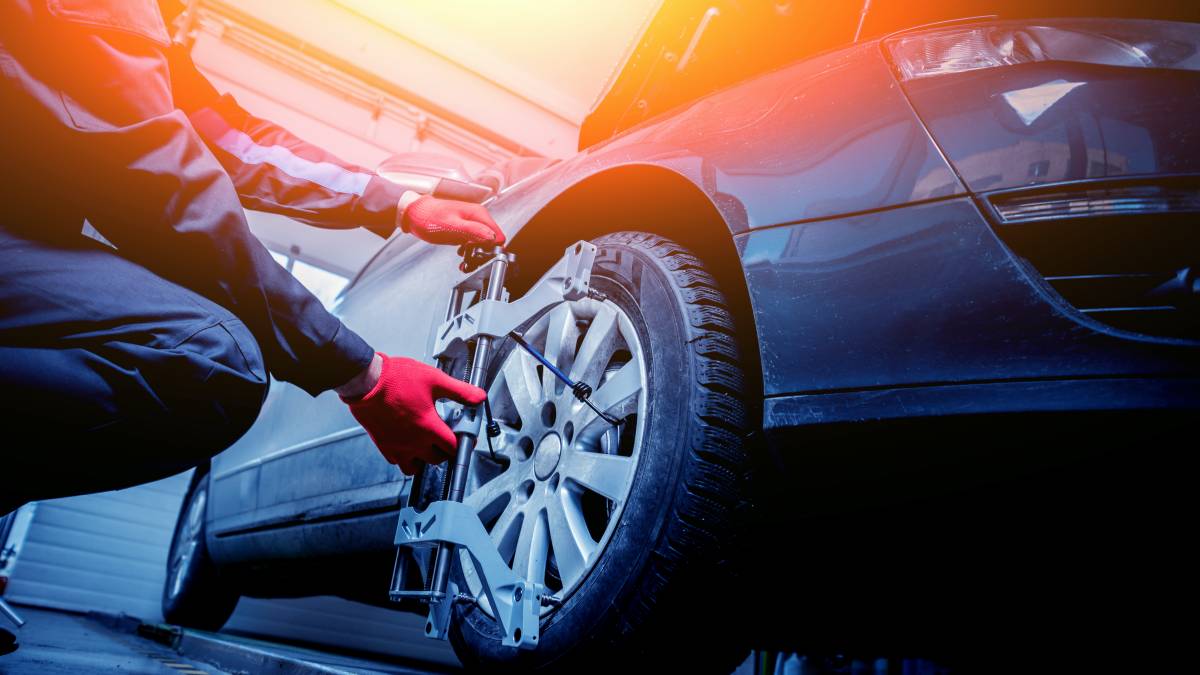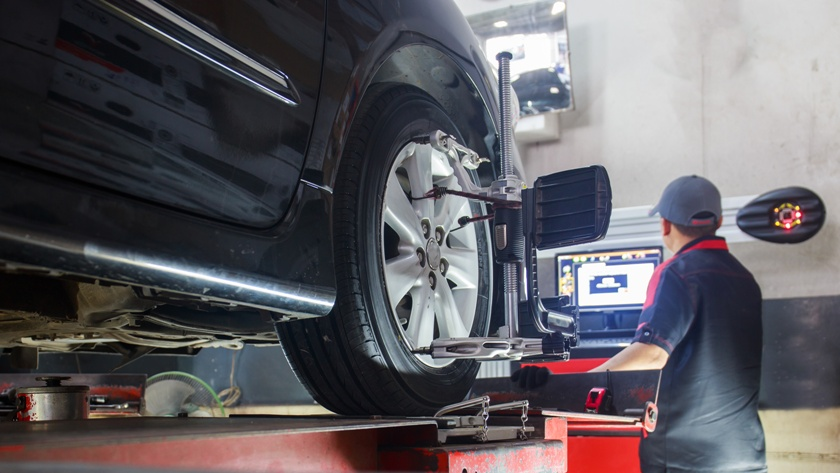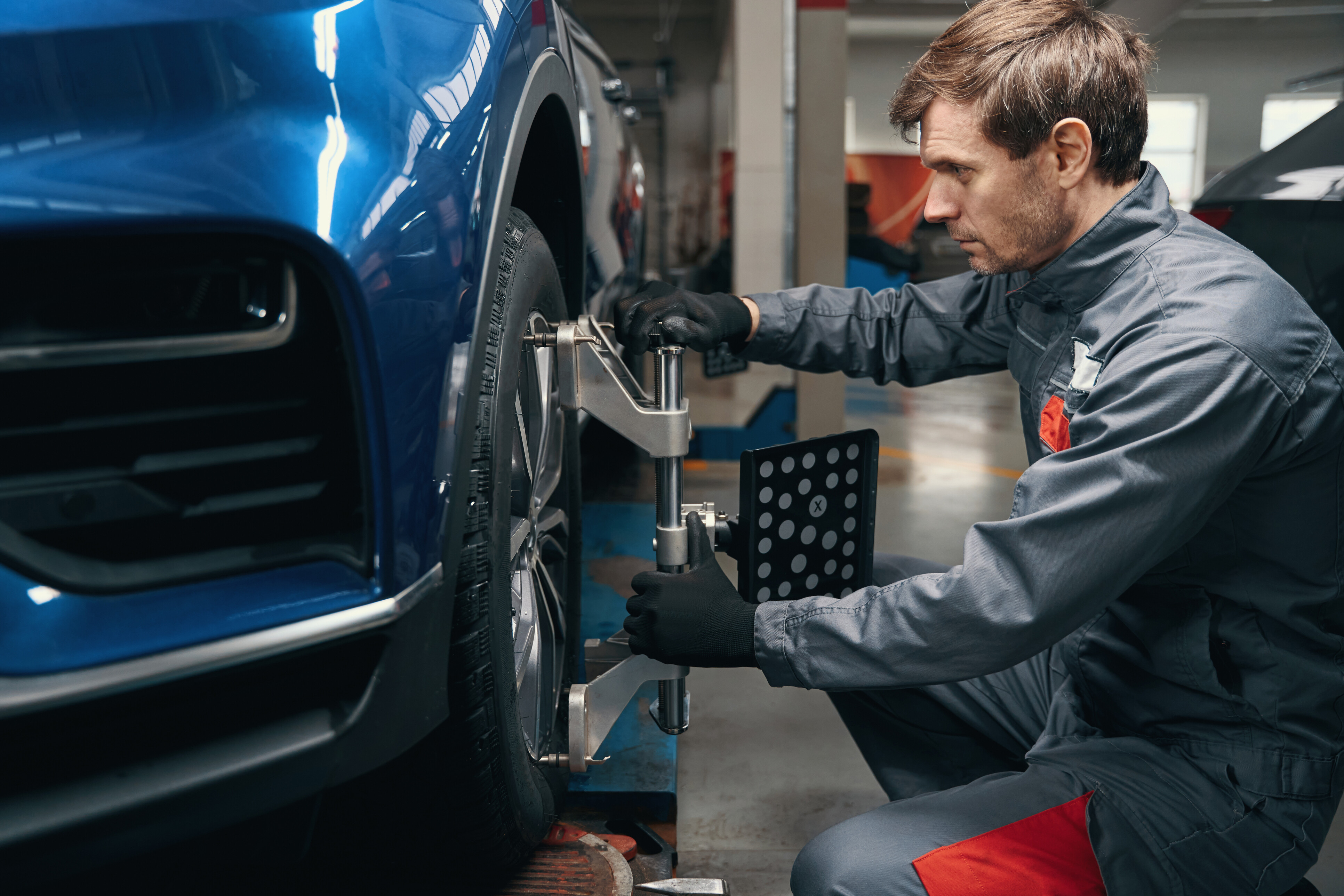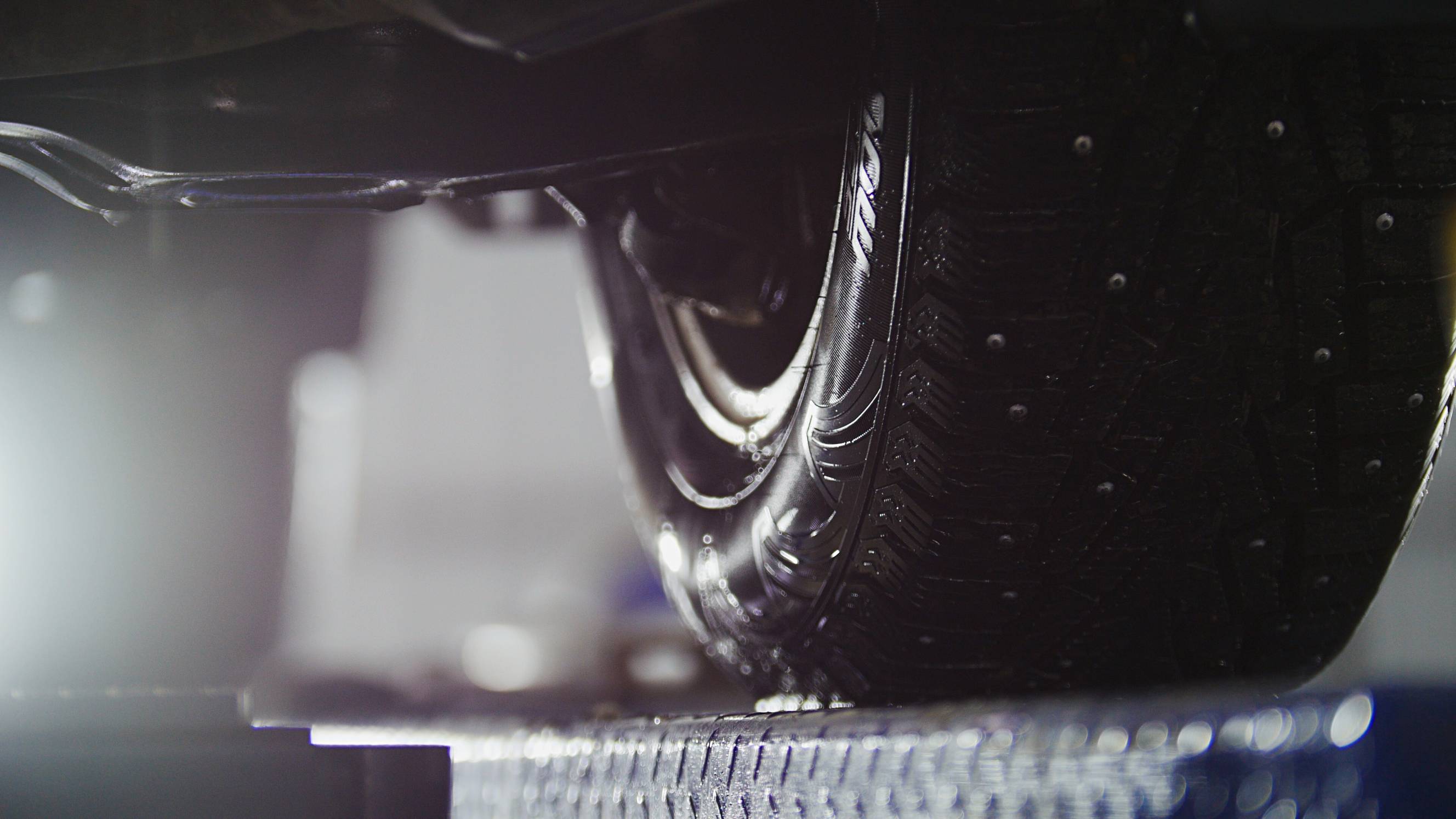- Home/
- Costs/
- Wheel Alignment/
- Wheel Alignment Inspection and Repair Cost Guide

Wheel alignment costs: What to expect and how to budget
Get a free quote nowPost to find a price. It's free and only takes a minute.
Price guide
$50 - $300
low
$50
median
$100
high
$300
Last Updated on
Key Facts
- Wheel alignment and repair costs vary, typically around $50 to $300. However, costs can increase further additional repairs, so budgeting for inspection and potential suspension work is wise.
- If the vehicle keeps pulling to one side with the steering wheel vibrating, these are the signs that it needs a wheel alignment.
- Wheel alignment typically requires a professional and is never recommended as a DIY job due to the precision and equipment involved.
Wheel misalignment isn’t just annoying; it’s a safety hazard. It can lead to uneven tire wear, poor fuel efficiency, and difficulty steering, all of which could lead to costly repairs.
Before you shell out for a realignment, it’s worth understanding how much the service typically costs and what influences the final price tag. This guide outlines what you’re paying for, what affects the cost, and what to watch out for.
What is wheel alignment and how does it work?
Wheel alignment refers to adjusting the angles of the wheels, ensuring proper contact with the road surface. This helps improve the vehicle's suspension, keeping a smooth car ride even when driving on uneven terrain. There are two wheel alignment types, namely,
- Front wheel alignment: Also known as a front-end alignment, this wheel service involves changing only your front two wheels. It's popular for Front-wheel drive (FWD) vehicles and older cars with a traditional rigid axle.
- Four-wheel alignment: Adjusts both the front and rear wheels of the vehicle; ideal for all vehicle types and drivetrain layouts.
When it comes to wheel alignment, mechanics and technicians often look at and address specific issues:
- Camber: It's the angle of your tyres when viewed from the front. Tilting too much in either direction means that re-alignment is required. Ignoring this can lead to worn-out suspension, ball joints, and worn bearings.
- Toe: It's the angle of your tyres when viewed from above. The front edges of your tyres could either move close together or ‘toe in’ or farther apart or ‘toe out’, requiring a wheel alignment.
- Caster: It's the angle of the ‘steering axis’ when looking at the side of the wheel. It’s responsible for keeping the vehicle stable and balanced, so it needs an alignment if it starts to tilt backwards or forward.
- Ride height: It's the distance between the vehicle's chassis and the ground. Typically adjusted by modifying sagging or worn-out suspension components like springs or shocks.
How much does wheel alignment cost in the US?
Wheel alignment costs vary depending on the type of alignment required. As you might have guessed, four-wheel alignments are more expensive, with prices ranging from $100 to $300. Meanwhile, a front-end wheel alignment only involves the two wheels on the front of the car, which typically costs between $50 and $75.
Your car’s make and model can also affect pricing. Here are a few of the main dealers in the US and the respective costs of their wheel alignment service:
| Car Model | Estimated costs |
|---|---|
Chevrolet Corvette |
$164 - $250 |
Ford Mustang |
$60 - $200 |
Jeep Wrangler |
$60 - $167 |
Toyota Camry |
$60 - $252 |
Toyota Corolla |
$60 - $218 |
Honda Civic |
$60 - $145 |
Honda Accord |
$60 - $149 |
Dodge Charger |
$60 - $300 |
Remember also that there’s an additional labour cost to consider. Mechanics can ask for anything from $367 to $585 and may base the price on an estimated hourly rate plus the materials costs.
 Digital systems help technicians assess and correct alignment with high precision. (Source: iStock)
Digital systems help technicians assess and correct alignment with high precision. (Source: iStock)
Heads up, though, that if new tires are needed beforehand, you might consider booking a mobile tire fitting service first. They can install and balance your new tires at home or work before heading for alignment.
Signs you need a wheel alignment
Although you will require an expert’s opinion to ensure that any problems with a vehicle are due specifically to alignment issues, the most common signs that it is time for a wheel alignment are:
- The tread on one or more wheels is uneven or worn at odd angles.
- Your vehicle 'pulls' to one side or another rather than driving straight (a test is to lift the hands slightly from the wheel while traversing a straight road, and if the vehicle drifts instantly to one side or another, it is “pulling”)
- The steering wheel seems to vibrate when you are driving at speed.
- The steering wheel is off-centre when you are driving a straight stretch of road (i.e. the centre, upright post is tilted to one side)
- It has been more than six months, or 10,000 km, since you last had the alignment checked.
- You recently hit a pothole or curb, and the vehicle handles it differently.
An alignment is likely needed if one or more of these signs apply to your vehicle.
 Camber, toe, and caster adjustments are key parts of a complete wheel alignment process. (Source: iStock)
Camber, toe, and caster adjustments are key parts of a complete wheel alignment process. (Source: iStock)
Find a mechanic for wheel alignment at Airtasker
Proper wheel alignment is not just maintenance as it keeps your car running smoothly, safely, and efficiently.
If you need a mechanic for wheel alignment, consider finding them here at Airtasker! Simply post a task so you can connect with experts near you. Don't forget to indicate these essential things in your posting to receive an accurate offer from Taskers:
- The time frame required
- Your budget
- The make, model and age of your vehicle
- Other issues you feel might affect the wheel alignment project
- The materials and parts you will provide (and ask for a quote on them if you want to compare your options)
- If you require a warranty on labour (and materials if you don’t supply them)
- Your location
Don't risk driving on misaligned wheels. Have them repaired today with Airtasker.
Related articles
Related articles
